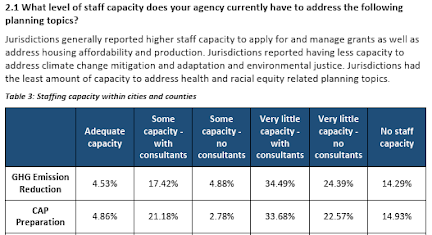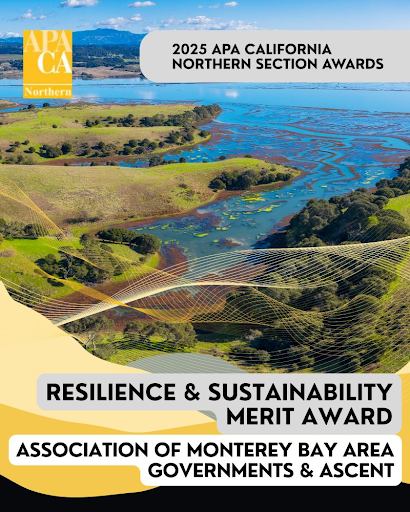Monterey Bay Maximizes Regional Capacity in Award Winning Natural and Working Lands Climate Mitigation and Resiliency Study
Association of Monterey Bay Area Governments (AMBAG) and Ascent for winning this year’s Resilience and Sustainability Merit Award for the Monterey Bay Natural and Working Lands Climate Mitigation and Resiliency Study.
The Monterey Bay Natural and Working Lands Climate Mitigation and Resiliency Study is the first comprehensive carbon sequestration analysis at a regional scale. Its innovative approach combines GIS modeling with extensive stakeholder engagement, creating a uniquely collaborative and data-driven framework. A comprehensive list of strategies and actions were identified to support carbon sequestration efforts that are scientifically sound and practically viable, making them implementable within the context of the Monterey Bay Area and its local agencies.
The Monterey Bay Natural and Working Lands Climate Mitigation and Resiliency Study analyzes carbon sequestration potential across Monterey, San Benito, and Santa Cruz Counties, offering strategies to enhance carbon storage, climate resilience, and sustainable land management in urban, forest, and agricultural areas through stakeholder collaboration and innovative GIS modeling.
“A key takeaway of this study is that we need to foster regional collaboration in order to implement innovative solutions at the scale needed to protect and enhance the carbon sequestration potential of our natural and working lands.”
/



